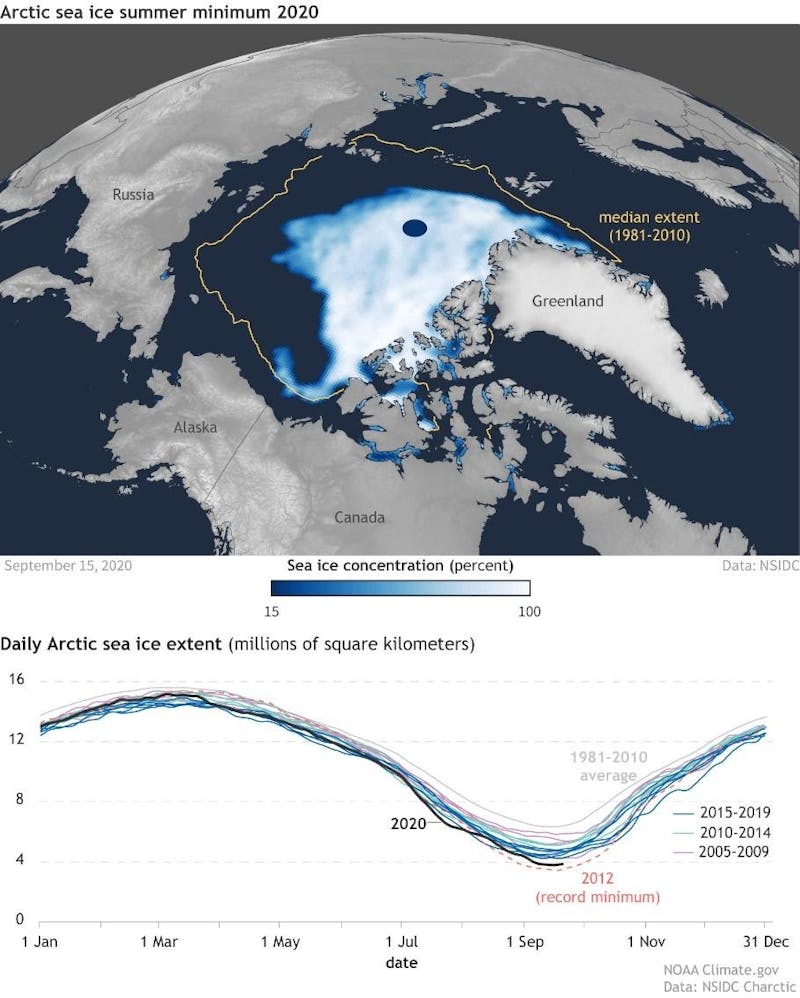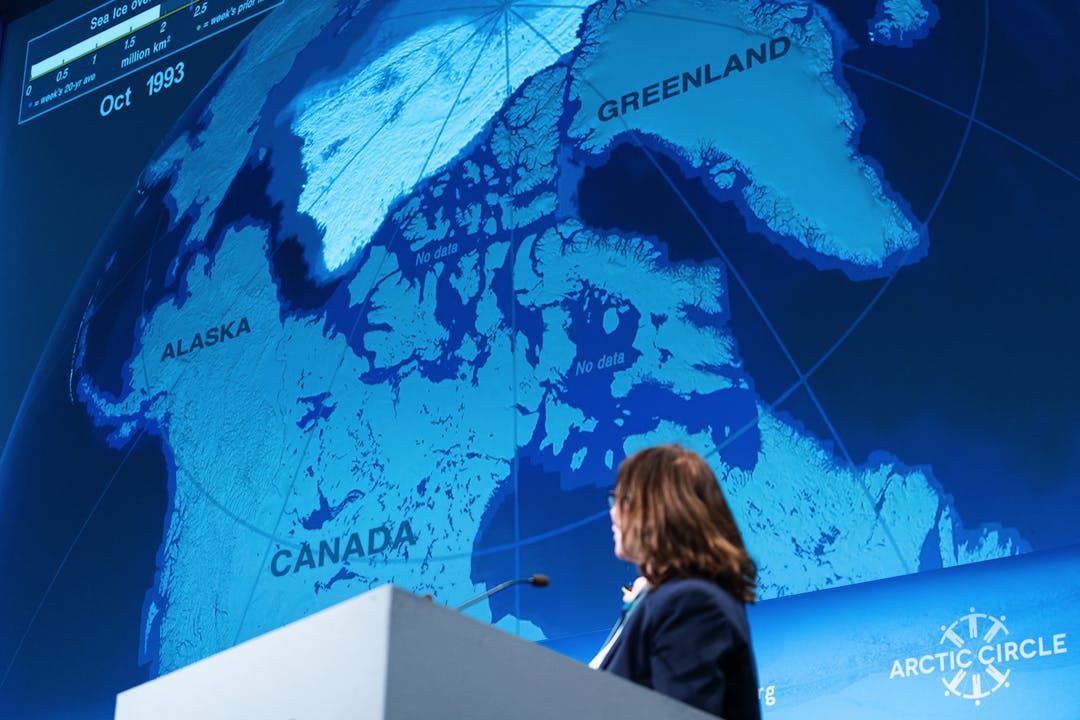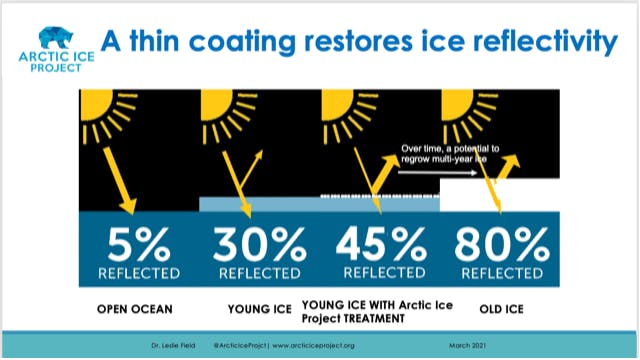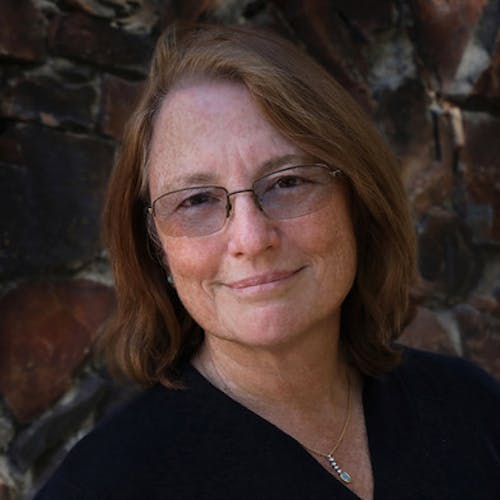The Arctic holds incredible beauty and difficult challenges. Historically it has played a vital role in maintaining stability for the Earth’s climate systems – even those far-removed from the Arctic itself. Ice in the Arctic is of central importance to the world, and is a dominant feature in the environment of its indigenous peoples, and their cultures and way of life; as well as the Arctic’s beautiful and unique environment, ecosystem, and resident non-human species.
In recent decades, the Arctic has warmed two to three times as fast as the rest of the planet – a phenomenon called Arctic Amplification. As the Arctic has warmed, 95% of the thickest, oldest, most reflective Arctic ice has melted, at an increasing pace in a positive feedback loop. Ice still grows in the Arctic winter, but the summer ice melt is destroying most of the thick, highly reflective multiyear ice. The new ice is thin, and much less reflective, which allows most of the incoming summer sunlight to be absorbed by the ocean further warming it, and leading to further melting. Many scientists believe that this positive feedback has led to Arctic warming becoming not only a consequence, but also a driver of climate change, and responsible for a significant fraction of global warming.
Below is an analysis of satellite data by NASA and the National Snow and Ice Data Center (NSIDC). It shows that the 2020 minimum extent measured 3.74 million square kilometers. That is 2.48 square kilometers below the 1981-2010 average of yearly minimum extents, and 2020 is only the second time on record that the minimum extent has fallen below 4 million square kilometers.

Arctic warming and ice loss is an urgent problem that will affect every living being on Earth. If we do not take effective action on this front within a very short time, the oceans will continue to warm and the Arctic will experience summers with no sea ice, possibly by 2030. In addition, Greenland’s melt will continue to accelerate, raising sea levels worldwide so that millions or even billions will become refugees; coastal infrastructures will be damaged and destroyed; and more and more species will be driven to extinction.
The pace of Arctic warming and ice melt make it unlikely that we can fulfill the Paris Accords goal to limit temperature rise to no more than 1.5-2 degrees Celsius by 2100, and it is unlikely that humanity can meet all, or perhaps any, of the United Nations’ Sustainable Development Goals. To meet the Paris Accord’s goal, the world will not only need to dramatically cut its greenhouse gases (GHG) emissions but also develop and employ ways to sequester GHGs from the atmosphere. None of the technology required to accomplish this mitigation and sequestration is sufficiently mature to accomplish these tasks. There is also the threat that loss of Arctic sea ice is moving toward a tipping point that may lead to the emission of a tremendous amount of methane (with 20 times the warming potential of CO2) from tundra, shallow ice shelves, and the ocean floor that can cause catastrophic changes across the globe.


